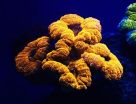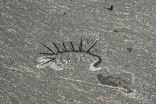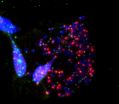(Press-News.org) Urinary tract and sexually transmitted infections in women are misdiagnosed by emergency departments nearly half the time, according to a paper in the Journal of Clinical Microbiology, a publication of the American Society for Microbiology. These misdiagnoses result in overuse of antibiotics, and increased antibiotic resistance, according to Michelle Hecker, MD, an assistant professor in the Department of Medicine, Division of Infectious Diseases, MetroHealth Medical Center, Case Western Reserve University, Cleveland, and her collaborators.
"Less than half the women diagnosed with a urinary tract infection actually had one," said Hecker. "Sexually transmitted infections were missed in 37 percent of the women, many of whom were wrongly diagnosed with urinary tract infections." The results, she said, indicate that emergency department diagnostic testing strategies for both types of infection need to be re-evaluated.
"Overdiagnosis of UTI [urinary tract infection] was not only a common cause of unnecessary antibiotic use but also contributed to the underdiagnosis of STI [sexually transmitted infection] since 64 percent of the patients with a missed STI were diagnosed as having a UTI instead," the investigators write. "An abnormal UA [urinalysis] result, seen in 92 percent of our subjects, was a common finding, poorly predicted the presence of a positive urine culture, and may also have contributed to the overdiagnosis of UTI."
Part of the problem arises from the fact that lower urinary tract infections share symptoms with some sexually transmitted infections, including dysuria (painful or difficult urination), frequency, and urgency. Additionally, urinary tract and sexually transmitted infections can result in similar findings from urinalysis.
Furthermore, the investigators found that women were often treated for urinary tract infections in the absence of related symptoms, and without having had a urine culture. "Twenty-four percent of the subjects diagnosed with UTIs had no possible UTI-related symptoms documented," the investigators write.
Additionally, of 21 subjects who received antibiotic therapy within a week after urine culture--eight percent of the total--10 had had negative urine cultures, and 12 received antibiotics which had no activity, or limited activity against the usual uropathogens, according to the report.
The study examined records from 264 women, ages 18-65, who were seen at the MetroHealth Medical Center emergency department. The investigators were able to retrieve urine samples the women had provided, and to test these for the sexually transmitted infections gonorrhea, chlamydia, and trichomonas in cases where these tests had not been ordered as part of routine care.
More than 1 million cases of urinary tract infections are diagnosed by emergency departments annually. The Centers for Disease Control and Prevention estimates that nearly 20 million new sexually transmitted infections occur annually, but many go unreported, and many more are undiagnosed.
INFORMATION:
The article can be found online at http://jcm.asm.org/cgi/reprint/JCM.00670-15v1?ijkey=mwWMjdx5ap9N6&keytype=ref&siteid=asmjournals.
The American Society for Microbiology is the largest single life science society, composed of over 39,000 scientists and health professionals. ASM's mission is to advance the microbiological sciences as a vehicle for understanding life processes and to apply and communicate this knowledge for the improvement of health and environmental and economic well-being worldwide.
Astronomers using NASA's Hubble Space Telescope have discovered an immense cloud of hydrogen dubbed "The Behemoth" bleeding from a planet orbiting a nearby star. The enormous, comet-like feature is about 50 times the size of the parent star. The hydrogen is evaporating from a warm, Neptune-sized planet, due to extreme radiation from the star.
This phenomenon has never been seen around an exoplanet so small. It may offer clues to how other planets with hydrogen-enveloped atmospheres could have their outer layers evaporated by their parent star, leaving behind solid, rocky ...
Cystic fibrosis is more deadly for Hispanic than non-Hispanic patients, a disparity that is not explained by differences in their access to health care, according to a new study from the Stanford University School of Medicine.
The study, published online June 18 in Chest, tracked more than 1,700 California residents with cystic fibrosis. Between 1991 and 2010, Hispanic CF patients were almost three times as likely to die as non-Hispanic CF patients, the study found. The gap in survival existed in spite of the fact that both groups visited CF specialty clinics equally ...
Glowing corals that display a surprising array of colours have been discovered in the deep water reefs of the Red Sea by scientists from the University of Southampton, UK, Tel Aviv University and the Interuniversity Institute for Marine Sciences (IUI), Israel, together with an international team of researchers.
The researchers, whose findings have been published online today in research journal PLOS ONE, hope that some of the coral pigments could be developed into new imaging tools for medical applications.
The team studied corals at depths of more than 50 metres and ...
Vitamin B12 tweaks how genes behave in the facial bacteria of some people who normally enjoy clear skin. The activity changes of the facial bacteria promote inflammation and lead to pimples.
By shedding light on one mechanism behind B12's role in acne, the UCLA finding may identify drug targets that lead to new treatments for acne.
Huiying Li, an assistant professor of molecular and medical pharmacology at the David Geffen School of Medicine at UCLA, and Dr. Noah Craft, a dermatologist at LA BioMed at Harbor-UCLA Medical Center, are available for interviews.
Science ...
On the hunt for better cancer screening tests, Johns Hopkins scientists led a proof of principle study that successfully identified tumor DNA shed into the blood and saliva of 93 patients with head and neck cancer. A report on the findings is published in the June 24 issue of Science Translational Medicine.
"We have shown that tumor DNA in the blood or saliva can successfully be measured for these cancers," says Nishant Agrawal, M.D., associate professor of otolaryngology -- head and neck surgery -- and of oncology at the Johns Hopkins University School of Medicine. "In ...
Various diagnostic imaging techniques are currently used for clinical imaging/disease diagnosis. The accuracy of diagnosis is mainly based on the type of energy used (such as X-ray, sound waves, photons and positrons) to derive the visual information, as well as the degree of spatial resolution (mesoscopic or microscopic) and the level of information that can be obtained (physiological, anatomical or molecular). Based on potential health hazards imposed by type of energy used, clinical imaging modalities can be broadly categorized as ionizing and non-ionizing modalities. ...
From AGU's blogs: Landslide-induced sediment production after the Sabah earthquake in Malaysia
The Mw=6.0 5 June 2015 Sabah earthquake in Malaysia, which killed 18 people in rockfalls on Mount Kinabalu, generated landslides that have released large volumes of sediment. The heavy tropical rainfall in Sabah means that this sediment is now starting to enter the river systems in the form of mudflows and sediment-rich flash floods. Dave Petley explores the aftermath of the Sabah earthquake in a new post on The Landslide Blog.
From Eos.org: Improving predictions of Arctic ...
A new study of an otherworldly creature from half a billion years ago - a worm-like animal with legs, spikes and a head difficult to distinguish from its tail - has definitively identified its head for the first time, and revealed a previously unknown ring of teeth and a pair of simple eyes. The results, published today in the journal Nature, have helped scientists reconstruct what the common ancestor of everything from tiny roundworms to huge lobsters might have looked like.
Researchers from the University of Cambridge, the Royal Ontario Museum and the University of ...
LA JOLLA--Telomeres, specialized ends of our chromosomes that dictate how long cells can continue to duplicate themselves, have long been studied for their links to the aging process and cancer. Now, a discovery at the Salk Institute shows that telomeres may be more central than previously thought to a self-destruct program in cells that prevents tumors, a function that could potentially be exploited to improve cancer therapies.
When cells replicate in a process called mitosis, their telomeres get a little shorter each time. Eventually, after many cell divisions, telomeres ...
The prospect of finding ocean-bearing exoplanets has been boosted, thanks to a pioneering new study.
An international team of scientists, including from the University of Exeter, has discovered an immense cloud of hydrogen escaping from a Neptune-sized exoplanet.
Such a phenomena not only helps explain the formation of hot and rocky 'super-earths', but also may potentially act as a signal for detecting extrasolar oceans. Scientists also believe they can use the discovery to envisage the future of Earth's atmosphere, four billion years from today.
The ground-breaking ...



